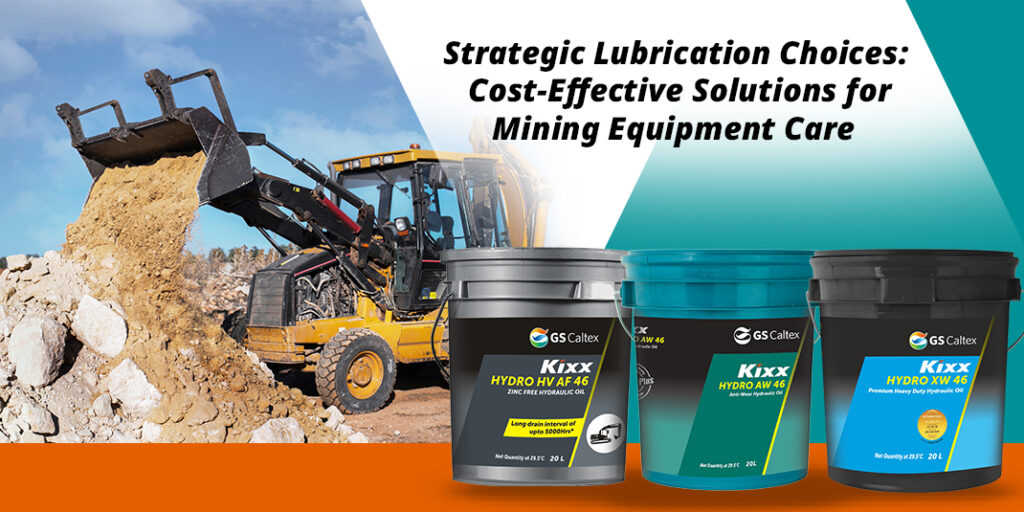04-04-2024

Table of Content
- Stage 1: Mining and Lubrication Challenges
- Stage 2: Building a Strategic Lubrication Program - Your Path to Success
- Stage 3: Reaping Rewards from a Strategic Lube Plan
Stage 1: Mining and Lubrication Challenges
- The Tough Terrain: Imagine abrasive dust getting into every corner. Picture equipment facing scorching desert heat one day and freezing nights the next. Lubricants must overcome these environmental obstacles. Dust grinds and accelerates wear. Extreme heat thins lubricants, while cold thickens them, compromising protection. Water from rain or humidity can wash away or break down lubricants.
- A Machine Symphony: A modern mine is a complex dance of specialised equipment. From mighty haul trucks to precise underground drills, each machine has unique lubrication needs. One approach doesn't fit all. Haul truck Engine Oil Price For Bike must withstand heavy loads and scorching temperatures, while underground hydraulic fluids may require fire resistance and wear protection.
- Finding the Right Balance: Performance and Cost: To be profitable, you must find the right balance between performance and cost. High-quality lubricants protect better and last longer. But, they can seem costly at first. However, looking closer, they are a smart investment that saves money over time.
Stage 2: Building a Strategic Lubrication Program - Your Path to Success
- Know Your Fleet Inside Out: A successful program starts with understanding your equipment's lubrication needs. Check the manufacturer's recommendations and look at factors like:
- Operating Temperatures: Will your equipment face very hot desert heat or freezing at high altitudes? Lubricants need to maintain the right thickness across this range for best performance.
- Reducing Friction: Imagine the huge friction in a massive haul truck loaded with ore. Lubricants need to be made to minimise friction between moving parts, preventing excessive wear.
- Water Resistance: Is your mine prone to heavy rain or humidity? Water-resistant lubricants are essential to prevent washout and keep their protective layer.
- Heavy Loads: Mining equipment bears very heavy loads unlike most machines. Lubricants need the strength to handle these loads and prevent premature wear.
1. Selecting the Right Lubricants for the Job:
With a clear understanding of your needs, explore the diverse lubrication options available:- Engine Oils: Synthetic or semi-synthetic options offer superior performance and protection in harsh environments compared to conventional mineral oils. They withstand extreme temperatures better, resist thickening, and offer extended drain intervals, reducing maintenance needs.
- Hydraulic Fluids: Fire-resistant hydraulic fluids are often a safety requirement in mines. These specialised lubricants offer excellent wear protection while maintaining performance at high temperatures.
- Gear Oils: Heavy-duty gear oils are formulated to withstand the immense pressure and shock loads experienced by transmissions and differentials in mining equipment. They minimise wear and prevent gear pitting.
- Greases: Multipurpose greases provide lubrication and protection for a wide range of components like bearings, chassis parts, and other friction points. For specific applications, specialty greases might be needed, such as high-temperature greases for extreme heat or water-resistant greases for wet environments.
2. Proactive Practices and Monitoring - The Key to Continuous Improvement:
- Scheduled Lubrication: Develop a lubrication schedule tailored to your equipment's needs. Ensure all critical components are lubricated at the proper frequency and with the appropriate lubricant.
- Look into Oil: Don't wait for issues. Regular oil checks give valuable info on your gear's health. Keeping an eye on worn parts and lube quality lets you spot problems early. Then you can schedule fix-ups, preventing pricey breakdowns.
- Training for Top Performance: Give your fix-it crew the know-how for success. Teach them the right ways to lube, pick products for each machine, and how to store and handle lubes properly.
3. Saving Money Through Smart Choices:
Quality lubes are pricey upfront, but they pay off in the long run. Here's how:- Equipment Lasts Longer: Proper lube reduces wear and tear, meaning your machines stick around longer. Fewer replacements saves you big money.
- Less Downtime: Regular lube and fix-ups keep your gear humming smoothly. Fewer unexpected stops mean more time mining resources.
- Lower Fix-it Costs: Well-lubed machines need fewer repairs and replacements. That means lower bills for labour and parts.
Stage 3: Reaping Rewards from a Strategic Lube Plan
To get the most out of your mining work, having a good plan for oiling machines is crucial:- Machines That Work Well: Proper oiling keeps your machines running smoothly. This makes it less likely they will break down or stop working. This lets you focus on digging up valuable things efficiently.
- A Safer Workplace: When machines don't break as often, it makes the work environment safer for employees. Using proper tools for oiling and handling oils safely can also help prevent accidents and injuries.
- Better Efficiency: With fewer breakdowns and less maintenance needed, your mine can operate at full capacity. Your teams can concentrate on core tasks like digging and processing, leading to higher productivity.
- Money Savings: Quality oils cost money upfront, but the long-term benefits are worth it. By making machines last longer, reducing downtime, and needing less repairs, a good oiling plan saves significant costs over time.